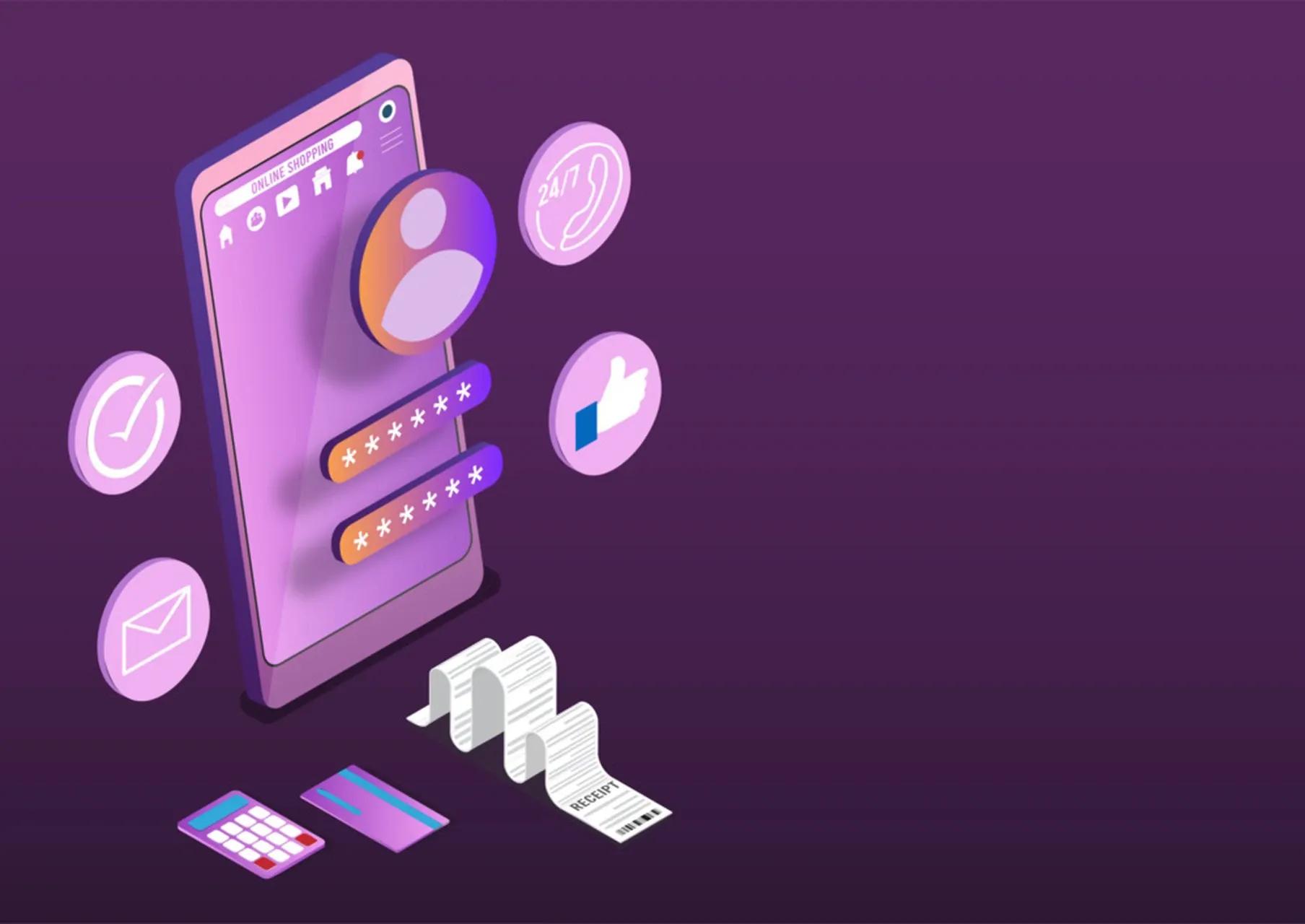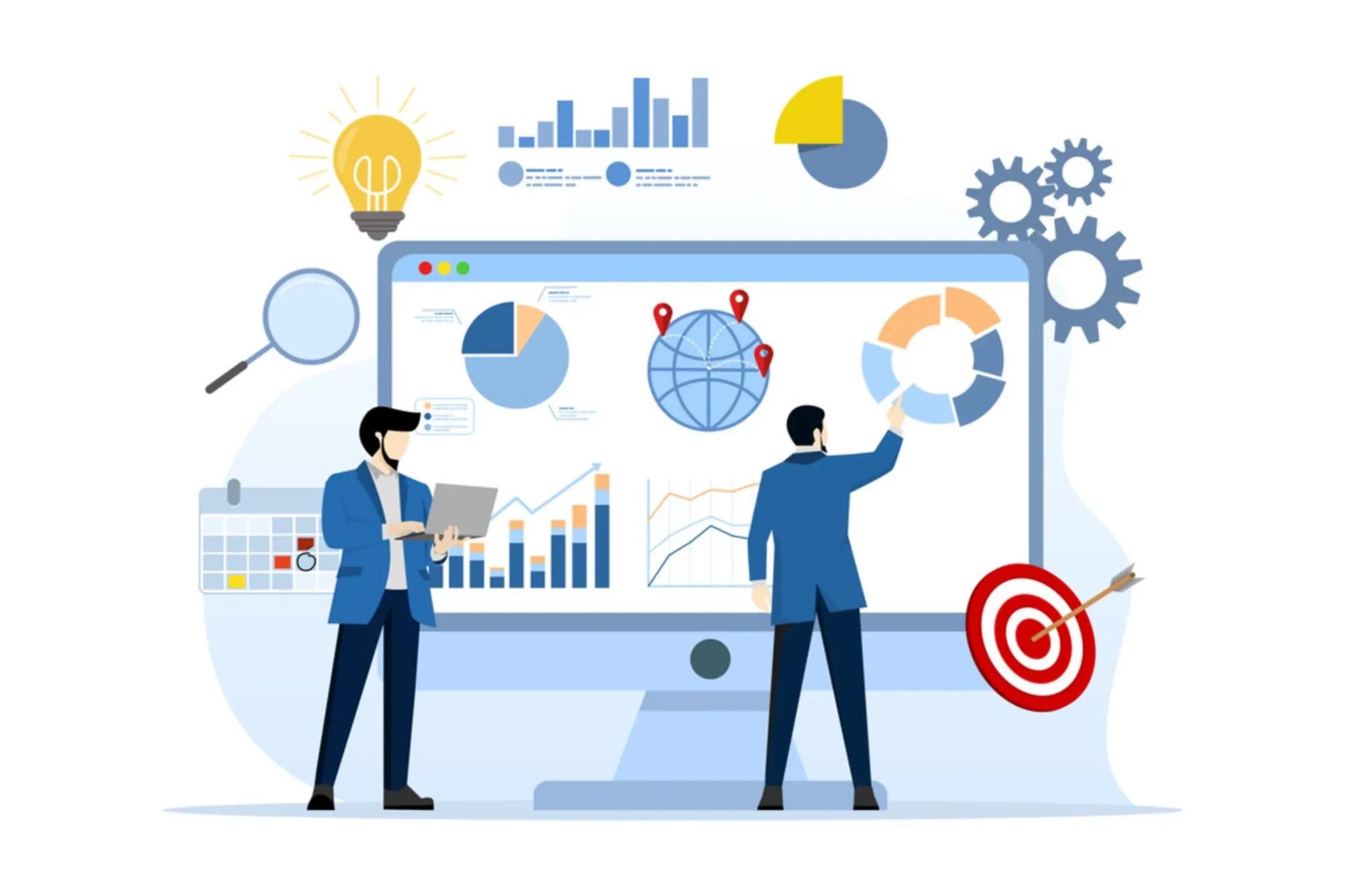AI营销

Electronic Signature Vs. Digital Signature: How Are They Different?
The global electronic signature market is projected to grow from $2.8 billion in 2020 to $14.1 billion by 2026.As e-signatures gain widespread adoption, the terms "electronic signature" and "digital signature" are often used interchangeably. However, these terms have distinct differences you’ll want to know before selecting one over the other.What Is an Electronic Signature?Electronic signatures refer to verifications applied to a document electronically vs. a signature on a physical piece of paper. These "signatures" (which don't always resemble your handwritten signature) affirm agreements or transactions between people or entities.Electronic signatures are ideal for:Software companiesBanking, finance, and insurance businessesHuman resourcesReal estate, legal, and consultancy businessesHealthcareElectronic signatures are easy to use via an electronic signature app. Once documents are uploaded and sent to signers, recipients can digitally sign these files on their laptops, desktop computers, tablets, mobile phones, or any other device.After signatures are obtained, documents are time-stamped and secured with a certificate. This added security layer gives your document a unique digital signature that is legally equivalent to a written signature.What Is a Digital Signature?A digital signature is the technology that proves the authenticity of a document. Digital signatures require a digital certificate from a certificate authority to vet a user's identity. The certificate is bound by cryptography to the signed document, creating a unique digital fingerprint.Digital signatures also embed a public key infrastructure (PKI) into the signing process. PKIs generate two keys— one public and one private — to identify the signer and the entity requesting the signature. Both the digital certificate and PKI provide stringent identification and security for sensitive legal documents.Usually only certain regulatory bodies require digital signatures.Electronic Signature vs. Digital SignatureElectronic signatures are digital symbols that a signer applies to a contract while digital signatures use encryption methods to authenticate digital documents. While both signatures are legally binding, electronic signatures replace traditional signatures.Electronic Signatures:Use standard methods (employee ID, email, or multi-factor authentication) to authenticate a signer’s identityVerify document authenticityAre equivalent to a handwritten signatureUse audit trails to validate signed documentsAre easy to apply via electronic signature appsDigital Signatures:Use sophisticated certificate-based identification methodsSecure document integrityAre not equivalent to a handwritten signatureUse encryption to verify the authenticity of signed documentsRequire third-party verificationStart Sending Secure Electronic SignaturesWith SignAre you ready to start sending electronic signatures? Signing paper documents is outdated, expensive, and time-consuming.LIKE.TG's Sign offers unparalleled support and includes more basic package features than any other e-signature product.Check out some of Sign’s unique features:Unlimited Users: Sign as many users as you want – no extra charges.Faster Results: On average, companies that switch to Sign complete contracts, agreements, and documents up to seven days faster, without printing or scanning!Unique Pricing Model: Pay a fixed price only when a document is completed, not when you send it. No signature = no costs.Safe and Secure: We focus on flexibility without compromising on security, compliance, or confidentiality.Get Started Fast: No special software, app, or program installation is needed. Collect electronic signatures via our web-based platform or API.Check out Sign today! Send your first three documents free, no strings attached.

CRM, CDP and DMP Platforms: How Are They Different?
What is a Data Management PlatformEver wonder why as soon as you search for a particular product on one platform, you see advertisements for similar products everywhere else? That’s partly because of DMPs, which gather and categorize data from various sources.This information is usually gained from third-party web analytics, such as cookies and IP addresses, that track your page visits or even the contents of your shopping cart. Data from a DMP can then be fed into a demand-side platform (DSP) so that companies can serve customers adverts based on their online behavior.As legislation regarding user privacy has become more stringent in recent years, such as with GDPR, this information should be completely anonymous and short-lived - expiring after a certain duration.While DMPs are great for targeted ad campaigns, they don’t have the same breadth and depth of stand-alone analytical tools, and online adverts are notoriously easy to ignore. They also do not build a complete view of your customers, which is where CRM and CDP systems become necessary.What is Customer Relationship ManagementThe goal of a CRM system is fairly simple: to improve business relationships by managing interactions with existing and potential customers. Most CRM software is used to create a simple interface for employees to record basic customer information as well as other important details, such as:email,contact numbers,call conversations,the customer’s buying prospects,contract status,or reasons for a won or lost deal.Ultimately, CRM systems help businesses, big or small:learn more about their customers,organize their information,and optimize the interactions with them.A CRM is particularly useful for marketing, sales, and service operations, as they frequently use past customer data to contact new or returning customers. A CRM can serve as an analytical tool to create a sales pipeline for forecasting and improving customer satisfaction by keeping track of ongoing relationships. It also helps with creating personalized experiences based on past interactions.However, a common drawback of a CRM system is that it often creates a limited view of the customer as it focuses on first-hand interactions and isn’t able to fully integrate data from different touchpoints. Because it also usually relies on manual entry, it can easily become overly complicated, labor-intensive, and difficult to manage effectively. That is where CDPs step in.What is a Customer Data PlatformThe main problem with customer data is that it is often siloed across different software systems and while businesses have access to ever-increasing amounts of user data, the core of their business remains digitally unintegrated.A CDP brings together data from various channels and sources to create a single, unified profile of each customer. CDPs work with first-party data, such as a CRM database of existing customers, combining them with second-party data (which is data bought from other companies) and anonymous third-party data (such as those gained by DMPs). This greatly benefits personalization marketing strategies as it gives a more holistic understanding of known customers while incorporating second- and third-party insights to target prospective customers more effectively.One should, however, be careful of platforms that have recently changed into CDPs but are, in reality, just CRMs, DMPs, or data warehouses. CDPs do not simply store information or route them between different systems, but they create a central database where information is organized, integrated, and made available to use when it is needed. Bringing all your customer data together is one thing, but you’ll need a trusted CDP if you want to use it well.A leading CDP provider like LIKE.TG allows you to segment customer data based on certain criteria, such as purchase history, birthdays, web behavior, and location. It gives you real-time insights into your customer's behavior, so advertising can be personalized and automated with workflows to reach customers via various channels exactly when they’re looking for it.How They All Come TogetherDMPs, CRMs, and CDPs all come together to create a bigger picture of the customer journey. After DMPs have created new customer leads, CRMs help keep track of the ongoing relationship, while CDPs bring all of this data together to help brands connect and engage with new and existing customers more effectively. Businesses don’t always need to choose one over the other two, as they all serve valuable roles in understanding your customer and aligning your marketing campaigns with holistic, data-driven insights.After all, data, on its own, is quite inconsequential – a small moving part in a bigger operation. Only when it is made valuable and accessible can companies explore their true potential in improving decision-making and measuring positive business outcomes.As more people take to online activities, the amount of user data being generated will only increase exponentially. If businesses want more effective customer engagement and satisfaction, they need to start using that data to its full potential.

5 Tips to Optimize Your Mobile Marketing
Are you struggling with the effectiveness of your mobile marketing campaigns, due to the lack of data or the right tools to serve all channels? Let us help by giving you 5 tips for better results.Improve the effectiveness of your mobile message for better resultsThe way today’s customers interact with brands is fundamentally shifting. Mobile marketing is quickly becoming one of the fastest growing channels to reach your target audience. If you are constantly optimizing the many possibilities of mobile marketing, your customer loyalty and conversion rates will only improve.5 tips to improve the conversion of your mobile marketing campaign1.Since every channel has its own limitations, you need to be creative with your message, and even more importantly, be short and concise. Make sure everyone instantly understands what your message is. Then check if your key message needs further elaboration. For example, you can extend your SMS messages with a mobile landing page, so that you can share rich content with customers.2.Improve conversion rates by curating a very clear call-to-action (CTA). Directly call out the expected response from your end customer.A list of things to consider when choosing your CTA:Use one single CTA, if listed twice, you can repeat the phraseAvoid distracting linksDisplay the CTA above the first foldUse color contrast to make the CTA stand outWrite a descriptive CTA, not: “next, shop, continue”, but: “take quiz, view mattresses, buy now”Make the CTA benefit oriented (what’s in it for me?)3.Mobile marketing is such a powerful tool, but your company is not the only one asking for your customer’s attention via this channel. Thus your message needs to stand out, be relevant and be personal. There are several ways to successfully personalize a message, leveraging on the things you know about your customer. Consider adding the name of the customer, using merge tags for previous purchases or including the location of the store they shopped at. Also think about adding your own name as the message signature and send your message from a personal account to make it more personable.4.Nowadays, mobile marketing campaigns are not just limited to SMS. Companies globally are leveraging on multiple chat app channels to reach out to their customers, ensuring that whichever channel the customer is on - they will be too! Use a provider that offers all the mobile channels that your customers are present on, in order to make both the set-up process and the customer journey as seamless as possible.5.Test, measure and improve. Use your data to get the best results. Set up an A/B test to evaluate which option works best. If you’re working with LIKE.TG’s platform, you can even segment your recipients into different marketing groups. Send your message, and wait for the results to come in.LIKE.TG platformFor the most effective mobile marketing campaigns, you need the right tools. The Mobile Marketing Cloud offers all solutions for your campaigns, landing pages, marketing automation and data collection. Use the Mobile Marketing Cloud to send out hyper personalized marketing campaigns across multiple channels and create 360° customer profiles.Register for demo today for the Mobile Marketing Cloud.

3 Creative uses of the WhatsApp Business solution: engagement & interaction
Hellmann’s WhatscookMayonnaise is more than just condiment. That’s what Hellman’s in Brazil wanted consumers to know. They started a creative WhatsApp campaign including real chefs and pictures of consumer’s fridges. In just 2 weeks, 8.000 people participated in the campaign for ‘Whatscook: The first live recipe service using WhatsApp’. The campaign eventually reached millions. How did it work?“Don’t know what to cook? With Hellmann’s, there is a way!” After sharing your number on the specific campaign page on the Hellmann’s website, one of their chef’s would reach out to you. Consumers were asked to take a photo of the inside of their fridge. Based on the ingredients available, the true chefs came up with a recipe using Hellmann’s mayo and other ingredients from the fridge. And no worries about the recipe being too difficult. The chefs would take the consumer through the recipe step by step using pictures, video and even illustrative drawings. As a result, participants - on average - spent over an hour interacting with the brand.Absolut’s Bouncer SvenAs a campaign for the Absolut Unique Limited Edition, Absolut launched a creative and fun WhatsApp campaign in Argentina. A highly Absolut exclusive party was announced. Absolut needed to build awareness and achieve close communication with people, drawing them to the shindig. Being the most popular messaging channel, WhatsApp was the way to go.To get in to the party, people would have to convince the imaginary bouncer called Sven to grant them access. By sending WhatsApp messages to Sven, people would try to convince him to get them free entry tickets. But, Sven wasn’t easily persuaded. So, people got creative. And this creativity not only caused a big buzz around the campaign, event and the brand. This campaign led to 3 days of uninterrupted chats with consumers, and over 1.000 types of user generated content like images, videos and audio files created to engage with Absolut’s Sven.X-Travel Group Challenge“Create brand activation with a high level of fun.” This was the challenge of the Dutch youth travel agency X-Travel. With WhatsApp being the most popular channel to interact with friends and families, X-travel decided to become part of that friend-to-friend interaction within the channel. X-Travel created the Group Challenge, a 4-weakly competition where 100 teams of 4 friends would compete for a free summer holidayIn order to win a free holiday, groups of friends received challenges to tackle together. For example by taking a cold dive or taking a photo in bathing suit in the cold outside. Share proof of challenge completion in the messaging channel, and you have the chance of winning a free vacation together with your besties. Travel agents from X-Travel would send out and coach the challenges.Do you have a creative idea on how to grow brand engagement on the most popular messaging channel out there? Request your valid WhatsApp Business account at LIKE.TG to find out what else is possible.

Scaling Up Your Voice Business Globally
The last thing you want to worry about is voice connectivity that withholds you from focusing on what matters most for your business. This means that you have to make sure you cover 3 things very well:QualityScalabilityCostAll three components can be greatly influenced by your SIP Trunk provider, both in a positive and a negative way. The following tips will help you choose the right provider to scale your international voice business.1. Don’t compromise qualityWe all know what makes a bad phone call: incorrect caller ID, robotic voices, a delay on the line, echoing or even complete disconnects. Companies doing frequent international voice calling probably have to deal with these issues too often. Even though issues like these will always remain due to nature of a VoIP call, you can decrease the chance they occur by considering the following:I.Multi-vendorWhile all vendors will claim 99.99% uptime, betting on one horse is never a good idea. Especially if your business relies on doing a lot of voice calls, it is strongly advised to connect with at least 2 or 3 proven SIP carriers. This will reduce your risk of complete outages and enables quality and cost comparison. Make sure to check for vendors that offer a geographically redundant platform.II.Route qualityThe longer your call needs to travel, and the more ‘hops’ it needs to take before it reaches the end user, the bigger the chance quality issues will occur. If voice call quality is key, make sure you connect with a SIP Trunk vendor that only offers premium quality routes. Premium quality stands for routes that guarantee proper delivery of your caller ID on the end user’s phone. Premium quality also means your calls are directly connected to the local telecom operator using the shortest route available.2. Scalability: make sure your voice connectivity is truly scalableWhen you are opening up new offices or are planning a large call campaign, your SIP Trunk connectivity needs to be ready to correctly process the increase in calls. However, call capacity cannot be determined with a single variable. The two main components that define your SIP Trunk capacity are:I.Concurrent Channels (CC)The amount of concurrent channels defines the total amount of live calls your SIP Trunk can handle at any given moment in time. This includes both the answered calls and calls being set up; outgoing and incoming. CC is the most important metric for defining SIP Trunk capacity, but the way you can utilize this capacity can be limited by the amount of Call Setups per Second.II.Call Setups per Second (CPS)CPS defines the amount calls your VoIP system can set up in a single second. It becomes especially relevant if you have, for instance, a large contact center with lots of agents that have a focus on doing outbound voice calls. If those agents need to wait before they can set up a new voice call due to capacity limitations, it becomes a costly business. Often, these calls are setup automatically using a predictive dialer. The higher your SIP Trunk’s Call Setups per Second capacity, the more calls your dialer can setup for your agents. A more effective dialer means less idle time for agents.While many SIP Trunk providers make promises such as ‘practically unlimited capacity’, this almost always refers to Concurrent Channels. Even then, there is no such thing as ‘unlimited capacity’. If you are upscaling your voice business, try to get real numbers for both CC and CPS limits with your supplier. This will keep you from getting unpleasant surprises later on.3. Eliminate unforeseen or hidden costsOnce you got your quality and scalability covered, one thing remains: your monthly bill. Calling internationally means paying different prices per destination. Also, regulation related costs may be applicable for certain countries. Be sure to keep things simple and transparent to prevent unexpected bills and disputes with your SIP Trunk provider.I.Surcharges Many countries have local regulation for national and international call traffic. This could not only impact the quality and connectivity of your calls, but often also comes with specific cost surcharges. A common example is the termination of voice calls that originate outside European countries, to European numbers. Each SIP vendor implements local regulation differently from a commercial perspective. Make sure you know upfront how it works, what the cost is and how to prevent it.II.Per second billingA more common point but not always a given fact in the VoIP industry is to actually pay for what you use. More specifically: there are still many SIP providers that charge you per minute, instead of per second. Never forget to double check your billing increments.III.No monthly feesLast but not least -and in line with use-based pricing and scalability- you should keep an eye on monthly fees. While not specifically a bad thing, monthly fees can pressure your margins when they increase based on the capacity you use. Minute rates might be lower with one SIP provider but increasing monthly fees might swing your decision to another supplier.Put these tips regarding scalability, quality, and cost into practice, and it will help your company focus on those things that matter most for international growth.LIKE.TG specializes in providing global SIP connectivity to contact centers and enterprises. Powered by a premium quality network, easy-to-use cloud apps and transparent pricing, you can be sure the quality of your voice calls is guaranteed 24/7 around the globe.If you would like to know more about what we can offer and trial our services, please check our SIP Trunk page.

8 Tips to Improve Your eCommerce Customer Support Experience
With global ecommerce sales predicted to hit $4.5 trillion in 2021, the retail landscape is changing dramatically. This shift to online shopping has made ecommerce customer service a top priority for online businesses, which often depend more on customer loyalty than traditional brick-and-mortar retailers do.Research from PwC found that 73% of all people value customer experience as an important factor in their purchasing decisions, so subpar customer service can really hurt ecommerce brands.Today we’ll go over eight strategies to take your ecommerce customer service to the next level.I. Prioritize Customer RelationshipsYour relationship with your customers forms the foundation of your ecommerce business. By prioritizing your customer relations, you can improve retention and increase brand loyalty.More than ever before, customer service is a key part of the customer experience. It’s estimated that it costs five times more to attract new customers than to retain existing customers, so your brand’s relationship with your customers has a real impact on your business’s bottom line. If you can resolve a customer’s problem and keep their business in the future, you’ll save time and money while preserving your brand’s reputation.2. Be Available 24/7One of the main advantages of online shopping is that customers are free to browse and make purchases at any time of the day. But this also means that many customers expect customer support whenever they need it.To improve their support experience, many online businesses offer a 24/7 customer service line, whether it’s a phone number or a live chat option that connects customers with a customer service representative.To make this service more effective and less time consuming, brands use chatbots to automate conversations. Because chatbots are so customizable, companies can program them to instantly answer common asked questions and respond to customer inquiries outside typical business hours. This allows customers to complete purchases more quickly rather than abandoning their online shopping carts when they have a question.3. Automate, Automate, AutomateWhile many customers want a quick, convenient ecommerce customer service experience, they also often prefer to ask questions and resolve problems in real time during a conversation. But the expectation of 24/7 customer service means it’s not always possible for a brand to offer live customer service representatives whenever customers need help.Enter AI chatbots, which use artificial intelligence and machine learning to automatically resolve questions without human intervention and can help multiple customers at once.AI chatbots use your existing resources, like FAQs or knowledge base articles, to answer customer questions and resolve issues around the clock. Businesses can even train AI chatbots to learn a specific voice and tone that supports their brand image.By automating customer service requests with an AI chatbot, businesses can let chatbots resolve simple questions, allowing their customer service representatives to focus on more complex queries and build a lean ecommerce customer service team.4. Track Relevant Customer Service KPIsFor businesses looking to seriously improve their ecommerce customer service, it’s critical to track key performance indicators (KPIs), like your average handle time and customer retention rate.By measuring your customer service experience with objective metrics, you can identify trends and pain points, allowing you to create a data-driven plan to improve your customer experience.For example, tracking your customer satisfaction score (CSAT) can be as simple as asking customers to provide feedback after a support call or sending them a brief online survey asking them to rate their experience. The higher your CSAT number, the more satisfied your customers are overall.5. Go MultichannelHigh-quality customer service is rarely possible with only a single customer support hotline. By developing a multichannel ecommerce customer service strategy, ecommerce businesses can be wherever their customers need them, whether it’s on Facebook Messenger, WhatsApp, online live chat, or even through Instagram.In fact, a study found that companies with the strongest multichannel customer engagement strategies retain an average of 89% of their customers, compared to an average of 63% in retail.6. Get PersonalA personalized shopping experience has become the standard in ecommerce. Data from Accenture shows that 91% of consumers are more likely to shop with brands that provided personalized offers and recommendations. The most successful ecommerce businesses collect customer data to build smart profiles to improve future customer service interactions.For example, LIKE.TG’s Mobile Service Cloud enables online businesses to integrate customer service conversations with their existing CRM or CDP to build comprehensive customer profiles. Armed with this data, you can offer personalized product recommendations and special offers, which can build customer loyalty and even drive impulse purchases while reducing returns.7. Streamline Your Channels for Efficient Customer SupportAs we mentioned earlier, multichannel options have become the standard in ecommerce customer service. More than just a way to keep in touch with friends and family, popular mobile messaging apps like WhatsApp and Facebook Messenger are also great tools for ecommerce customer service.Our Mobile Service Cloud allows businesses to manage all their customer conversations from one easy-to-use Omnichannel Inbox. Instead of trying to keep up with multiple messaging apps, you can streamline all conversations to increase quality and efficiency for your customers and provide consistent customer support on all platforms.8. Offer Proactive Ecommerce Customer SupportAn exceptional customer service experience is almost always a proactive one, where a brand anticipates potential issues and resolves them before they happen. For ecommerce brands, which are typically limited to virtual interactions with customers, proactive support can help build a more positive relationship between an online store and its customer base.For example, set up automated communications, like customer satisfaction surveys and online product review requests, when customers receive their products. By capturing customer feedback as early as possible, brands can reduce the number of negative reviews and create a positive experience that will increase their customer retention rate.Elevate Your Ecommerce Customer Service Experience With LIKE.TG’s Mobile Service CloudReady to transform your business’s approach to ecommerce customer service? Get started with LIKE.TG's Mobile Service Cloud, an all-in-one customer service software that enables you to engage customers where they’re already spending their time.Our Mobile Service Cloud leverages on smart data segments and automation to ease the burden on your staff while increasing customer satisfaction across the board. With an Omnichannel Inbox to manage all customer conversations, a chatbot to provide instant answers 24/7, and the ability to collaborate with internal and external teams, businesses can optimize their customer service with a single user-friendly solution.Contact us today to learn more about Mobile Service Cloud!

How to Win with OTT: 8 Real-World Customer Service Uses
The demand for personalized customer service experiences has skyrocketed, and OTT messaging apps have kept pace with that demand. OTT (over-the-top) apps like WhatsApp, Facebook Messenger, and Apple Messages for Business enable businesses to communicate quickly and easily with their customers.Curious to learn about the variety of use cases for OTT chat apps? Here are eight ways to win using OTT apps in the on-demand customer service industry.How to Use OTT Apps for On-Demand Customer Service: 8 Real-World Use Cases1. Food and Grocery DeliveryDemand for food and grocery deliveries surged during the COVID-19 pandemic. While restrictions are starting to ease, grocery and meal deliveries have become the new normal for many.Real-world usage: Communicating orders and delivery preferences is a snap with OTT apps. For grocery or restaurant deliveries, would your customer prefer non-spicy or spicy? Coke or Sprite? The ability to clarify food choices and delivery issues in progress enables delivery agents to make changes on the fly.Combine all your OTT apps in one inbox: Discover Mobile Service Cloud2. Travel and HospitalityOTT apps have been a great asset to the travel and hospitality industry. Airlines and travel agents have used OTT apps and chatbots to book flights, hotels, and activities, facilitate travel and hospitality accommodations, and increase customer convenience.Real-world usage: Interacting with a mix of chatbots and live agents enables travelers to create a travel itinerary, combining round-trip flights, car rentals, and restaurant reservations seamlessly. During hotel stays, guests can order room service and on-site spa treatments through OTT messaging apps.3. Health and FitnessInterest in healthy lifestyles has inspired consumers to enlist the services of personal trainers and nutrition coaches. Engaging clients via messaging apps like Messenger or WhatsApp streamlines communications between customers and their chosen health and fitness professionals.Real-world usage: Health professionals like dietitians and nutritionists can send custom menu plans and check in with clients’ weight goals and measurements. Fitness trainers and coaches can help clients through new exercises, stretching, and motivational needs via OTT chat.4. Professional Services“Professional services” covers a broad range of customizable services available to consumers and businesses. Professional services range from lawyers, financial advisers, and consultants to architects and real estate agents. OTT apps allow professional service companies to stay in touch with clients and provide convenient services and consulting via chat.Real-world usage: Notaries can schedule and reschedule their signing appointments via messaging app. Real estate agents can relay information on properties for sale to their clients. Plumbers, electricians, and contractors can all use OTT chat apps to schedule appointments and consult on service and maintenance needs.5. Customer SupportIf you’ve ever called a customer support line or clicked an online chat window, chances are you’ve dealt with a chatbot at least once. Customer support issues take up valuable time, with agents answering repetitive and routine questions.Real-world usage: Have you wondered how to use OTT apps for customer service? Providing customer support via chatbots is a powerful way to harness technology to handle lower-level customer support issues. It frees up live agents to attend to more complex problems, saving time and resources.Did you know WhatsApp is the #1 customer support channel? Find out why.6. Order Tracking and ShippingCommunicating order tracking and shipping information rarely requires interaction with a live person. With the abundance of products ordered online, customers are eager to receive order updates to ensure their deliveries' safety.Real-world usage: Ecommerce and logistics companies can send order confirmations, shipment updates, and transit information via OTT. If an order is rescheduled, canceled, or delayed, conveying that information to your customers helps avoid customer service issues, calls, and disappointments.7. Appointments and ReservationsMaking appointments and reservations is one of the most effective uses of OTT communications. When scheduling is easy, customers are more likely to make changes when necessary, allowing you to fill spots that suddenly become available.Real-world usage: Restaurants, salons, real estate agents, and sales professionals can take advantage of OTT apps to confirm appointments and reservations. Confirming arrangements immediately after they’re made, sending reminders, and facilitating alternate arrangements when necessary keeps customers and businesses happy.8. Customer Surveys and FeedbackWant to find out what customers are thinking about your products or services? Ask them! Sending customer surveys via OTT apps is an effective way of gauging customer interest and satisfaction. Answering surveys via chat is quick and easy, making it attractive to customers to respond.You can send customer surveys via OTT immediately after an event, purchase, online chat session, or appointment. If the experience is fresh in your customers’ minds, you’re more likely to receive accurate and helpful feedback.Turn conversations into conversions with Apple Messages for Business.Real-world usage: A local delivery service can follow up on orders with a short SMS survey asking customers to rate their delivery experience. For example, a food delivery service can prompt customers to rate their previous food and experience via Apple Messages for Business after a successful delivery.OTT Messaging Best Practices for On-Demand BusinessesBefore going full steam ahead chatting with your customers, make sure you review and follow a few OTT messaging best practices.Keep It BriefGet to the point! Keep your messages brief and easy to read for the best results.Chat With Customers SparinglyRemember, chatting with customers should address pressing customer service needs. But don’t overwhelm them. Since texting has a high response rate, it’s likely that your customers will see your messages and take action on them immediately. Engage customers via chat interactions only when necessary.Stay ProfessionalThe voice and tone you use in your chat messages reflect your business, brand, and reputation. Follow your company’s established communication guidelines to ensure a friendly but professional tone.Harness the Power of OTT Messaging Apps With Mobile Service CloudWant to get started using OTT messaging apps for your business? LIKE.TG's Mobile Service Cloud provides everything you need for a seamless customer experience, anytime, anywhere.Automate your conversations with a chatbot, or interact with your customers through their preferred channel via one omnichannel inbox.Mobile Service Cloud is the #1 software solution for customer service.Increase customer satisfactionBoost productivity and efficiencyMaximize conversions and ROIPlus, it connects via API for quick and easy startup. Take a closer look at our software and find out what it can mean for your business today!

The Benefits of SMS Marketing
As a marketer, you get to choose between countless traditional and new media to target your audience with. Email, Facebook Messenger, telephone calls, in-app push messaging, letters, and so on. But which channel, or mix of channels, would best serve your goal of conversion? Believe it or not, but the greatest open rates are not reached with the latest messaging innovations. Despite all technological possibilities, good old SMS remains the channel with the highest open rates. SMS has a staggering open rate of 98%, where most messages are even read within the first 5 minutes. It starts with Mobile To better understand the value of SMS in creating exposure for your brand, we need to dive into the channel of mobile-first. Consumers in Asia have never been as attached to their phone. Just consider, do you check your phone within the first hour of you waking up? And do you check it before you go to sleep? Essentially, mobile plays a vital part in the lives of consumers and we take that little device with us wherever, whenever.That helps explain why mobile is such a valuable channel to get your message seen by your target audience. However, due to the value of mobile, many marketers are targeting this device in their fight for the customer’s attention. As a result, not all mobile channels are equally effective if you want to be noticed.For example, how many emails do you get in your mailbox each day? Though email has its benefits, it may be hard to stand out from the crowd. Or let's consider Push Messaging. This is another valuable tool that you can use to share your message with a selected audience. But this is dependent on if you customer has your app installed and if they have a stable mobile connection. If the connection is bad or unavailable, your message will be delayed or even disappear.SMS, however, isn’t internet-reliant, which is why it’s such an effective solution for large-scale, widely distributed communications, reaching anyone with a mobile phone, regardless of internet connectivity.You can use our tools to create a personalized SMS marketing campaign and deliver it instantly to your customer’s phone. Reaching your audience has never been so easy.Features of SMSSMS has been around for years but it's far from outdated. SMS has continued to evolve over the years, adding more features that you may not be aware of:Personalization via merge tagsTarget groups and individualsSchedule for the perfect timingAdd mobile landing pagesCost-effective and reliableRich analytics for conversion optimizationAvailable via API, WebApp or via your mail clientEasy to combine with other marketing channels via one platformDiscover the power of SMS – It’s free!Interested to find out more about SMS and how you can reach your customers more effectively? You can check out our page on SMS or request a demo of the Mobile Marketing Cloud to see how mobile marketing can help you reach your goals.

Reach Out to Customers via WhatsApp Business with Message Templates
To understand the purpose of Message Templates, we first need to distinguish the two types of WhatsApp Business API messages. And for this, we need to understand what the Customer Care Window is. This window is a 24-hour time frame that starts the moment your customer reached out to your business via WhatsApp. In these 24-hours, your business can send both Session Messages and Message Templates.Session MessagesCustom messages, typed in reaction to messages, in the familiar chat functionality of WhatsApp.Can be sent only within the 24H Customer Care Window.Message Templates Pre-approved messages that can be sent both in and outside the 24H Customer Care Window. These messages can be used to send notifications with an active opt-in in your conversation. Approval of Message Templates is done by WhatsApp and LIKE.TG. You can enter your own Templates for approval or use the existing Message Templates your WhatsApp Business solution provider (LIKE.TG) offers.If you wish to communicate with your customer outside this 24-hour Customer Care Window, meaning you want to initiate a conversation with a notification (after you have received opt-in from the customer), you may only send Message Templates. This is to prevent customers being spammed by companies, and to maintain the high value of WhatsApp as a channel for customers to interact with businesses. This is the reason Message Templates need to be pre-approved.What does a Message Template look like? A Message Template may consist of text, emoji or WhatsApp-specific formatting.A Message Template can consist of a maximum of 1024 characters. To personalize the message, you can use the numbered placeholders {x}. Each of those placeholders can be filled with letters, digits, special characters and spaces. This is best explained with an example.Hello {1}, thanks for your order! We will let you know whenyour order is ready to be shipped. You can track your order with number {2} here {3}. Enjoy your day! As the WhatsApp Business solution is intended as a channel to send useful information and provide customer support, sending advertising, marketing and promotional messages are prohibited, resulting in disapproval of Message Templates with such character. For further information on the commerce policy, please click here.How to register new Message Templates To register your own Message Templates, you need to provide a template name and template tag.Template name: You need a unique name to identify the template’s use case for you business. All in lower case and without spaces. Underscore is allowed. Example: order_confirmation.Template tag: Select the type of message from a predefined set.Want to start using the WhatsApp Business API to improve your customer care? Visit our WhatsApp product page.

What is Proptech?
So why is the industry slow on the uptake? One explanation could be simple resistance to change: the ‘it’s worked for us until this point, why change?’ attitude. Another, perhaps better, explanation is a lack of qualified people within the industry able to manage the change–new technology can be daunting and, if chosen poorly, it can also be very expensive. Fear of getting it wrong could be a major factor holding the industry back from embracing the benefits of technology. Thankfully, Property technology or ‘Proptech’ is finally showing signs of acceptance and growth and there are a number of self-service offerings to take the pain out of the transition. Let’s look at how and why your business should be investing in Proptech.Proptech: the real estate revolutionFirst of all, what does it actually mean? In a nutshell, Proptech is any technology designed for use in the real estate space that streamlines one or more of the processes involved in buying, selling, renting or managing property, whether it be a software, service, or hardware solution.In practice, the underlying ethos of Proptech is no different to the other ‘-techs’ out there, such as Fintech or Legal Tech. Proptech is designed to make operating in the property market more efficient, faster and more cost-effective.While the property industry has been relatively slow on the uptake of automation, it’s not immune to the challenges and opportunities that technology presents and that perceived inertia is rapidly turning around and impacting the way we buy, sell, rent, manage and interact with our properties right now.Global Proptech investments have been increasing at around 36% annually in recent years and there are signs that may increase significantly as the real estate industry ramps up even more post-COVID.COVID, as in many other industries, has accelerated the adoption of new technologies as the real estate industry –traditionally used to conducting its business face-to-face – pivoted to virtual viewings and electronically signed contracts. In addition, Proptech has influenced other elements of the real estate industry, such as lead generation, marketing, communication and data organization.The rise and rise of ProptechSo beyond COVID necessity, what are the technological driving forces behind the uptake of Proptech, and where are the most significant advances coming from?MOBILESmartphones continue to drive a surge in mobile internet use across almost every industry. Proptech is no different. As millennials continue their efforts to get on the property ladder, their property searches increasingly take place on mobile, with 50% of millennials using mobile devices to search for homes and around 26% using them to take the next steps in the home-buying process. Inevitably, as Generation Z begins to take its first steps to home ownership or rental, the ‘digital natives’ will demand a fully mobile, end-to-end real estate experience.AISet to revolutionize the way estate agents interact with their customers, AI and machine learning has the potential to transform the way customer data is used in real estate contacts and transactions. As things stand, property search sites use a relatively small cross section of data to personalize recommendations, but AI has the potential to broaden these criteria to include psychographic preferences, for example.In addition, AI can be used to summarize lengthy contracts and legal documents and power chatbots, allowing estate agents to focus on qualitative client contacts rather than answering repetitive questions. When teamed with a Customer Data Platform (CDP), AI can help real estate agents respond promptly to new leads and focus on priority tasks.VIRTUAL REALITYA US study by the National Association of Realtors found that almost half of potential homebuyers used the internet as their first port of call when researching properties. With that statistic in mind, you can see how virtual and augmented reality can play a part in the homebuying process, freeing up real estate agents by doing one of the most time-consuming parts of their job for them. It also has the potential to widen the net to buyers that struggle to view properties due to distance or time constraints.Property developers can benefit from virtual reality, too, by creating a guided tour of a property’s facilities.SALES MARKETINGMost of the benefits we’ve covered so far have favored buyers or renters, but Proptech also benefits real estate agents in a wide variety of ways. Enabling more focus to be placed on the customer, it’s opened up a wide variety of communication channels to allow customers to get the information they need fast. From SMS, to WhatsApp, to chatbots; customers can get the details they need quickly and efficiently, and without the need to rely on a human to supply them.A study by research firm McKinsey found that sales people who adopted AI increased leads and appointments by up to 50%, and they were more able to sustain those relationships to move them to conversion later on.CUSTOMER DATA PLATFORMSImplementing a Customer Data Platform is a crucial step to mitigating the impact of the kind of cutthroat competition that’s familiar to those working in real estate. A CDP is also the first step to adopting the types of technology we’ve discussed in this article. CDPs deliver clear data insights that help you to better customer reach and engagement and formulate data-driven marketing strategies that will really work. CDPs are also distinct from DMPs and CRMs.The challengeWhat’s clear is that failure to adopt Proptech will leave real estate businesses at a significant disadvantage to organizations that embrace the Proptech revolution, hampering growth and wasting time that could be best spent elsewhere.This KPMG study shows some of the challenges faced by the real estate sector, many of which can be relieved entirely or partially by the adoption of Proptech.Where do I start?Larger organizations may already have the infrastructure in place to realize their Proptech ambitions. But what about smaller businesses? The right technology partner can deliver an end-to-end solution that’s easy to implement without a dedicated IT department. At LIKE.TG, our Mobile Marketing Cloud offers a suite of solutions that can automate a huge range of the marketing requirements needed to run a successful real estate business. In addition, our Conversational AI Cloud can handle time-consuming and repetitive customer conversations and allow your team to focus on following up and converting qualified leads.Free up your team to focus on quality customer engagement.

Why Do You Need A WhatsApp Bot?
Why is WhatsApp the Preferred Choice?WhatsApp is one of the most powerful communication platforms globally, with the number of active users continuing to rise during the pandemic. Beyond just number of users, here's 7 reasons why we believe WhatsApp is the preferred channel for most businesses.WhatsApp is AccessibleIt is platform agnostic which means WhatsApp can be installed on almost every device, whether Apple, Android or Windows.WhatsApp FeaturesThe platform is constantly introducing new features to the app, allowing users to share contacts, content, location pins and status broadcasting.Unlimited messagingWhatsApp offers users unlimited real-time messaging which means engaging in conversation with anyone, anywhere in the world at any time.AffordabilityIt’s free to download and all forms of communication are a lot more cost-effective than alternatives. International calls – once extremely expensive – are now much cheaper with WhatsApp. Considering the global nature of modern living, this makes WhatsApp very much in demand.Group MessagingWhatsApp's group messaging option allows communities and businesses to stay up to date on all activities. Sending a group message saves time and effort while reaching a broader audience quickly.It’s Advert-FreeOne of the best-selling features of WhatsApp is that, from the start, it has been an advertisement-free platform. This means uninterrupted use when communicating, making it a much more user-friendly option.Business BenefitsThe arrival of the Covid-19 pandemic meant that businesses had to quickly adhere to new social distancing measures and transform their business to suit online interactions. The benefits of WhatsApp in a social setting can also be replicated across to businesses, making it convenient to reach the target audience simply and effectively.What is a WhatsApp Bot?Also known as a WhatsApp chatbot, a bot is a program or software that is used on the WhatsApp platform for conversational marketing and client solutions. The chatbot can be powered by a defined set of rules, designed to engage in conversation with humans over chat. It provides businesses with a number of e-commerce opportunities that are now becoming mainstream.Use Cases for WhatsApp BotsIf your business isn’t already using WhatsApp chatbots for customer engagement, here are a few ways it could take your business further.1. Lead generationThe simplicity of starting a conversation with a WhatsApp chatbot makes lead generation much easier. Businesses will typically share a telephone number or a click-to-chat feature via online ads which then open a new chat window instantly. Once the conversation begins, the business will also receive the customer’s name and phone number, allowing for personalized communication that sees strangers convert to customers.With a WhatsApp Business API, businesses can create a verified profile which potential new customers can search for. Subsequently, this messaging platform also allows you to nurture the leads by personalizing communication.2. Instant Customer ServiceIn today's world, customers expect instant responses to queries. If responses aren't fast enough, businesses run the risk of customers moving on to the next business that does respond promptly. The WhatsApp bot is a one-stop customer solution designed to handle all types of customer requirements, from commonly asked questions to complaints. The bot is even able to facilitate new orders, process refunds and assist in post-sale and post-service follow-ups.The reality for many businesses is that customer service is an important, but ultimately time-consuming function. With automated responses, businesses are able to save time and focus their team on business-enhancing activities. And, when the chatbot cannot assist, it can then re-direct the query to a customer support center. Essentially, a WhatsApp bot can act as your virtual customer care agent, day and night!3. Loyalty ProgrammesLoyalty programs are a great way to secure customers and invite repeat purchases. However, running loyalty programs can be a challenge as customers need to be updated on their points earned, special offers, redemption methods, etc. Emails are often overlooked.With a WhatsApp chatbot, the loyalty program is completely automated with point balances, and reward reminders can be sent off to users as a way to encourage redemption.4. Alerts and NotificationsShort, sharp notifications to customers is important in modern business, but as mentioned previously, emails can be missed out and so time-sensitive messages might be missed. A WhatsApp chatbot is the perfect way to send instant alerts to customers, such as appointment reminders, discounted offerings or event notifications.These bots are also great for sending out automated invites requiring quick RSVPs. The sudden rise in webinars, as well, has prompted the need for such instant alerts and notifications to a large audience. The chatbot can even be trained to answer questions related to the event such as location and itinerary.The Covid-19 pandemic has also shown the value of such instant alerts with government and hospitals able to send out vaccination registration confirmations, and scheduling via the WhatsApp bot. Other time-sensitive notifications such as test results can also be sent via the bot platform.What Are Some Benefits of WhatsApp Bots?Easy sharing of multimedia: WhatsApp chatbots let customers upload photos of products, videos, invoices or other business-related content. There’s also the option of sharing locations for quick delivery.Automation: WhatsApp chatbots are able to operate with minimal human touch which also lowers the risk of error.Security: WhatsApp offers end-to-end encryption features making it secure when sending confidential information, such as bank details.100% deliverability: WhatsApp chatbots get the message through every time.Tailored conversations: WhatsApp chatbots use Artificial Intelligence (AI) to continuously provide enhanced experiences. This means they keep learning about customers and can actually offer personalized recommendations based on customer history and patterns.Natural Language Processing (NLP): These capabilities enable the WhatsApp chatbot to provide a more seamless interaction, rather than a stilted, mechanical communication.Make sure you’re taking full advantage of the WhatsApp Business Solution.Contact LIKE.TG for WhatsApp bot specialists who can tailor a solution to your requirements.

What Is Integrated Customer Service and What Are Its Benefits?
When customers contact customer service, it’s the job of your customer service team to understand the issue and then address it. Rather than smoothing the issue over, however, your team can inadvertently make the situation worse if the service is slow and ineffective.For example, after a team member obtains relevant information from a customer, this information may get lost when they hand the issue over to a colleague. As a result, the colleague asks the customer for the same information again.This not only frustrates the customer, but also lengthens the time your team needs to resolve the query.What’s more, providing competent service only becomes more challenging if your business offers multiple support channels, and your team has to grapple with different channel interfaces and functionalities.By practicing integrated customer service, however, your business will be in good stead to sidestep such issues and deliver an exceptional service experience. Read on to learn what integrated customer service is, its benefits and how you can get started.What Is Integrated Customer Service?Integrated customer service is an approach that combines technology with the human touch to provide an effective service experience across:Your entire customer service team: Customers should receive a consistently stellar service experience regardless of who is attending to their matter, thanks to frictionless team collaboration between service representatives.All of your business’ support channels: Different channels offer different engagement features, and customers may get in touch regarding a single issue over multiple channels. Your business needs to have full visibility over each customer’s concerns, regardless of how they had reached out, and then deliver effective service within the unique customer engagement rules of each channel.How Can Your Business Benefit From Integrated Customer Service?1. Provide a Seamless Customer ExperienceImplementing integrated customer service helps ensure a seamless customer experience, with customers receiving smooth and effective service for their queries.Some queries are relatively straightforward and can be resolved through the smart use of automation. For example, a simple scripted chatbot could help businesses deliver automated responses to frequently asked questions.However, other queries may be more complex and call for human support. In this case, your business will need to seamlessly hand these queries over to a customer service representative with no drop in service standards.As all conversations are appropriately tracked and documented, your entire customer service team will have access to all messages in the conversation thus far.This is helpful as the representative conversing with a customer may not be the representative who had first engaged with them. Even if they are, it may have been some time since their last interaction.Whichever is the case, the representative can review the conversation to get up to speed on the situation. Then, after getting a thorough understanding of the customer’s situation and needs, they can provide a timely and satisfactory response.2. Reduce Customer Response TimeDon’t keep customers waiting when they need help. The sooner your customer service team can respond to and resolve their queries, the more satisfied your customers will be with your business.Adopting an integrated approach to customer service, your business can set up its customer service solution to pull customer data from these sources:Customer relationship management (CRM) softwareCustomer data platform (CDP)Enterprise resource planning (ERP) systemBy doing so, you enable your customer service team to view customer data directly within the support interface when customers reach out.This saves your team the hassle of scouring through different channels to piece together a full picture of your customers’ profiles. As a result, they can provide quicker responses, instead of causing the conversation to sputter to a halt.When business analytics platform Databox surveyed 28 customer support pros, it found that their:Average customer response time was approximately three hours and 14 minutes, while theirMedian customer response time was approximately one hour and 56 minutes.How does your business’ average customer response time compare? Can you do better?3. Effectively Engage With Customers via Their Preferred ChannelsEmail and phone aren’t the only channels that customers can use to get in touch with businesses these days. There is also WhatsApp Business, Viber, Facebook Messenger, Instagram Messaging and Google Rich Communication Services (RCS), amongst other channels.In fact, if your business isn’t already offering support through asynchronous chat channels, you may be lagging behind.A study conducted by Forrester Consulting found that over 51% of customers surveyed rank asynchronous chat channels among their top three preferred communication channels with businesses.The research also revealed that customers most commonly used such channels to get help with an issue.However, if a business’ support conversations are scattered across different channels, it may have difficulty building a comprehensive record of all its support interactions with customers thus far. This in turn limits its ability to render effective customer service for future issues.Not only that: some customers may submit duplicate queries for a single issue through multiple channels. If a business fails to pick up on this, it may end up wasting resources on providing more support than is necessary.With integrated customer service, such headaches are a thing of the past.Your business can view all conversations in one place, such as a central Agent Inbox, and address these with greater efficiency. Meanwhile, customers can obtain support via the convenience of their preferred channel.Get Started With Integrated Customer ServiceWhen done right, integrated customer service elevates the service experience for customers, who enjoy seamless, hassle-free, and speedier support. In turn, businesses stand to benefit from improved customer satisfaction, which can incentivize repeat user engagement and purchases.To practice integrated customer service in your business, your customer service representatives have to see themselves not simply as individuals but as a collective unit, striving to render the best customer service possible as a whole.In this light, it doesn’t matter if one representative provides outstanding customer service if a partner colleague does a dismal job. In the customer’s eyes, you will have let them down. Work on fostering a collaborative mindset in your team, where the focus is on assisting one another in addressing queries as fully and satisfactorily as possible.After that, invest in technology solutions that will empower your team to streamline their collaborative efforts and work effectively as one, no matter how many support channels your business has or intends to offer.Mobile Service Cloud is an all-in-one customer service solution for customer service teams to maintain full visibility of all support engagements in one place. Supporting a wide range of chat channels, Mobile Service Cloud contains all the features that your team will need to deliver phenomenal customer service, and keep customers loyal to and delighted with your business. Explore Mobile Service Cloud today.

Why You Should Automate Your Mobile Marketing
In order to create campaigns that speak effectively to your individual customer personas, demographics and psychographic groups, without a tool, it would take a team of skilled marketers and data analysts quite a bit of time and effort.Just ensuring your customer data is clean and properly segmented is a job function in itself. Then add on developing a campaign strategy, curating multiple campaign messages and building the proper workflows for your various personas.Furthermore, you would need to consider the multitude of mobile messaging channels available. Decisions need to be made on which ones to focus on, how to keep your messaging consistent throughout, and then how to distribute your efforts to ensure your customers receive their personalized messages on their preferred channels.If that all sounds easy to you, then you may not need us.If, however, that sounds complicated and like several jobs in itself, then you may want to consider leveraging on a mobile marketing automation tool to simplify the process.Let’s quickly list out some of the benefits of automating your mobile marketing:You can automate everything: messaging, customer segmentation, personalization and even analytics.Time-consuming routine processes like data filtering and customer segmentation can be fully automated - creating clean, complete data sets and segments in seconds.You can manage large quantities of customer data effectively. Using a Customer Data Platform (CDP), you can access all customer data at the press of a button and filter it quickly according to your needs.You can reduce time to market, allowing your marketing campaigns to be created quickly to capitalize on recent events, for example.You can push out your campaigns to multiple channels simultaneously with no extra effort, delivering your marketing message to users on the channels they prefer.You can A/B test more effectively and automate the results, meaning the best performing campaigns will automatically be shown and less performing creatives removed.You can personalize your campaigns to a far greater degree than using manual methods. Multiple combinations of text and multimedia can be created and rolled out to specific segments of your customer database.Most importantly, you can scale campaigns quickly and efficiently as your data sets and customer segments grow.The ability to take customer or potential customer data and create specific, bespoke marketing campaigns that speak directly to consumers about the pain points they’re experiencing is invaluable.Ultimately, automation removes a huge chunk of human effort in marketing activities, allowing you to run multi-layered marketing campaigns with minimal effort, to A/B test, and even remove the need to constantly monitor campaign performance.

How to Scale Your Business Communications with SMS API Integration
Today, SMS is much more than just text messages. With the evolution of Rich Communications Services (RCS), Two-Factor Authentication, mobile landing pages, and multi-channel messaging, businesses are in a position to give their customers a whole new experience using business messaging.An SMS API allows businesses to integrate SMS messaging into their existing software platforms to send or receive messages quickly and easily. LIKE.TG’s APIs are highly reliable and secure and make it possible for businesses to connect to an SMS gateway to send or receive notifications around the globe at any time, allowing businesses to operate 24/7.This flexibility is beneficial when your business outgrows email to SMS or Web SMSsystems and demands a more sophisticated communication via SMS gateway API.If you wish to scale your business messaging and send bulk SMS messages worldwide, SMS API integration offers measurable benefits as you get to access your API provider‘s services directly on any of your business applications, websites, or systems.Benefits of SMS API IntegrationBetter efficiency with automationSMS APIs make workflows faster and more effective with minimal human intervention. When you automate sending and receiving your SMS messages using APIs, you ensure your communications go out as planned.For example, an API can replace a manual process executed between two applications. If your business sends the same message regularly, an SMS API can effectively trigger these messages without manual involvement. You can also schedule time-sensitive messages at a precise time.Global SMS coverageAn SMS API lets you connect your website or application to your SMS API provider’s services for reliable and secure global messaging. You can benefit from direct carrier connections and operator networks offered by your SMS API provider to deliver your SMS worldwide. An SMS API will help you send millions of messages worldwide within seconds at the highest quality.Higher visibility and trackingAn API facilitates tracked messages with delivery receipts. Another key feature offered by SMS API is informing your application exactly which outbound message matches a given response. This feature is vital for transactional messaging applications that enable you to match responses with messages.Fast, reliable, and secure deliverySince the API provides straight access to the SMS gateway, you also benefit from direct access to enhanced speed and reliability. You can deliver hundreds or thousands of text messages within seconds globally, from your application to your target audience.If your API provider offers the right level of security, you will be ensured a secure connection between your systems and your provider.Integration with your business systemsThe API works across your business applications and platforms, enabling you to manage your messages from a single interface. This integrated experience provides a more cohesive and unified view of your overall communications.Integrate via API with easy setup from LIKE.TG’s platformLIKE.TG’s Business Messaging API lets you start where you want and with what works. Even a single channel — such as SMS — will add significant value to your customer experience. You can add moreconversational channels later on with the same API based on your business plan.The Business Messaging API is easy to set up with your applications and software.LIKE.TG offers an intuitive and self-service interface that takes you through creating and sending a campaign in just a few clicks. Choose to send SMS Campaigns from any database with advanced features and engagement statistics.Get StartedIf you want to send and receive SMS messages globally or in any part of the world, you can leverage on LIKE.TG’sSMS Gateway API. Our SMS gateway allows you to send bulk text messages across the globe in a fast and secure way. In addition, our analytics tool provides a detailed, real-time overview of your international traffic to maximize and track flows.Our SMS API helps you start meaningful two-way customer conversations at a low cost, whether you use short codes or long codes, and fully supports detailed documentation and codes for developers.Our expert team will guide you through SMS do’s and don’ts for your region-specific regulations.Offer exceptional customer experiences using an SMS API. Contact ustoday to get started.

7 Benefits of Using Multi-Factor Authentication
I. What is Multi-Factor Authentication?Multi-factor authentication, or MFA, requires users to identify themselves through multiple verification measures and credentials before granting them access to specific data or payment methods. It’s an additional layer of security that protects consumers’ online accounts and transactions against hacking and data theft.Consumers are now accustomed to using various types of multi-factor authentication within their daily lives. Examples of MFA include:Authentication via memory, like a PIN or an answer to a secret questionAuthentication via retrieval, like a verification code delivered via SMS or physical token like a USB keyAuthentication via identification, which may include fingerprints and facial recognition Two-factor authentication (2FA) is a common type of MFA that requires two of these factors to verify the user’s identity. Multi-factor authentication involves at least any two of these factors or all three. More consumers are turning to their mobile devices to purchase goods and services. By 2021, mobile ecommerce could make up almost three quarters (72.9%) of ecommerce sales, totaling $3.5 trillion. This growth makes security precautions an even bigger concern to consumers and businesses alike.If your company does a significant amount of business through mobile channels, ensuring consumer safety and trust is paramount.II. 7 Benefits of Multi-Factor AuthenticationAccording to research by Microsoft, 99.9% of cyberattacks can be blocked by using multi-factor authentication. Here are seven benefits of incorporating MFA into your mobile security strategy.1. Reduce Fraud Identity TheftThe days of being able to crack a simple password and gain access to privileged information are over. Requiring more than two methods of identity verification makes hacking harder for cybercriminals. MFA reduces fraud and identity theft by requiring additional security measures that thieves can rarely access.2. Increase Customer TrustCustomers like knowing their data is secure. Even though additional verification steps can seem annoying and unnecessary at times, customers trust and appreciate businesses who take precautions to protect them seriously.3. Achieve Compliance Some industries require specific compliance measures, such as GDPR and HIPAA. Health, finance, and government entities demand that businesses follow strict guidelines that protect consumers’ rights and mitigate risk. Make sure you consider your business' unique needs when determining your security requirements.4. Reduce Operating CostsNotifying customers of suspicious activity on their accounts costs businesses time and money. MFA reduces the occurrence of fraud, reducing help desk efforts and enabling staff to focus on more complex customer service issues.While there may be upfront costs to implement MFA successfully, the investment pays for itself in the long run.5. Streamline Safe Mobile TransactionsNow more than ever, people are completing transactions online and via mobile devices. OTT (over-the-top) apps like WhatsApp and Facebook Messenger allow consumers to make purchases directly from the app, making increased security against fraud through multi-factor authentication a necessity.6. Combat Password FatigueAccording to NordPass, the average computer user has between 70 and 80 passwords. With so many passwords to remember, many resort to using the same password on multiple accounts or creating simple, easy-to-steal passwords. Both methods lead to easy password hacking.Adding MFA safeguards against password fatigue and adds an extra security buffer, ensuring that cybercriminals cannot hack even simple or repeated passwords.7. Simplify the Login ProcessThe invention of single sign-on logins has made multi-factor authentication much easier. A one-time password (OTP) is a string of letters, numbers, or characters sent to a user for a single login attempt. One-time passwords can be sent to a mobile phone via SMS or voice, protecting web-based services, private credentials, and data. OTPs reduce the risk of fraud by sending users time-sensitive, unique, and random codes and PINs to their mobile devices via SMS, voice, or push message. Combining MFA security with an app's convenience enables customers to use one login while maintaining high security standards.III. How to Set Up Multi-Factor Authentication TodayAre you ready to get started with multi-factor authentication? LIKE.TG’s Two-Factor Authentication API authenticates new users, secures account logins, and safeguards mobile transactions with one click. Our 2FA solution builds consumer trust and increases your conversion rates across multiple channels.One-time passwords enhance application security and manage user verification via SMS and voice calls. With a 98% open rate, SMS is known for its high visibility and reliability. By sending one-time passwords via SMS, you can reach your users wherever they are and reduce login frustrations. LIKE.TG’s SMS Gateway API also allows you to facilitate one-time-passwords with customers worldwide. Schedule a demo today to learn more about our Two-Factor Authentication solutions.

WhatsApp Business: More Types of Proactive Messages Now Available
As you may (or may not) know, WhatsApp Business API allows you to communicate directly with your customers, either through session messages initiated by your customers or templated messages initiated by you after they have opted in.Now, businesses can use the WhatsApp Business API to share additional information. This means that you’ll be able to employ these new perks:Send products recommendations to your customers, related to their previous purchasesSend helpful informational alertsSend relevant offers to your customersSend reminders to book appointments to your customersSounds great, right? So what do you need to do to get started? If you’re already using WhatsApp Business API then you're pretty much all set. Just use the LIKE.TG platform to request your new templated messages. Keep in mind that the following three regulations still apply to ensure high-quality customer experience:Expected: Your customers have already opted in to receive information from you over WhatsApp so they will expect you to message themRelevant: The messages are personalized to the specific customer (for example, based on recent purchases or recent engagement with your business, personalized content in the message itself), concise, contain necessary information, and clearly outline any next steps for your customerTimely: Your customers receive these messages when they are relevantOpt-ins (in advance) are still required before sending these notifications and of course you also need to adhere to the WhatsApp Business API Commerce and Business Policies. The Business Policy outlines the following requirements:Businesses must clearly state that a person is opting in to receive messages from the business over WhatsAppBusinesses must clearly state the business’ name that a person is opting in to receive messages fromBusinesses must comply with applicable lawAnd remember: your customers will always be in control on WhatsApp. Make sure that the opt-in clearly states what messages you will be sending to your customer (order updates, back-in-stock alerts, product recommendations, etc) and what value these messages have to them.Opt-in and opt-out flows should be clear and intuitive for your customers and we should avoid messaging customers too frequently.Now let’s get into the benefits of these new types of messages. What can they do for your business?TelecommunicationsProactive outreach for top-ups before minutes, message or Internet bundles run outReminders about plan renewals before expirationFinancial ServicesProduct recommendations based on recent activity or purchasesSigning up for a line of credit or installment planPre-approval for a new kind of loan or credit cardCredit card discountsNew partnerships offersRetail/EcommerceProduct back-in-stock remindersProduct recommendations based on recent purchasesCart abandonment reminders for products not yet purchasedRelevant offers and dealsRelevant new products introductionsInterested in these new WhatsApp Business API features or WhatsApp Business API in general? Get in contact with us today and find out more.

Chatbot vs. Live Chat: Which Is Right For You?
When it comes to offering chat on your website, you have two options: live chat (which involves customers talking to a salesperson or customer service rep in real-time) or a chatbot (where customers can interact with software that offers answers based on a pre-written script or on a flow triggered by keywords or intent.)Chatbots fuelled by artificial intelligence use NLP and machine learning to understand and analyze conversations with people and tailor their responses by drawing on pre-defined answers, an educational database, or previous conversations with customers. These bots are even able to handle transactions.In this article, we explore the benefits of both live chat and chatbots and why you should consider both to meet your customers’ needs. Let’s jump in!What is the difference between live chat chatbots?Live chat involves a live conversation between a company’s employee and a customer or lead. Chatbots on the other hand, refer to an automated conversation with a customer/prospect and software. Chatbots can answer a range of pre-defined questions, such as, “What are your opening hours?”, or “Do you deliver to Seattle?”. More sophisticated AI chatbots can help customers with tasks such as subscription renewals, changing an address, or ordering food.The benefits of live chatMeeting customers’ need for human interactionsWith live chat, customers or prospects can engage in direct conversations with customer support employees or salespeople. One-to-one support has always been an essential part of delivering a great customer experience and 70% of consumers say they desire human interactions when it comes to these customer support conversations.Users site personalized interactions as key to their positive experience of a brand. When customers are feeling stressed and overwhelmed, a warm, helpful, and supportive conversation with an agent can go a long way to take the edge off their stress and help them feel like your company cares about their problem.Get a deeper understanding of prospects and customersWhile you can review chat transcripts to find out more about the concerns of your prospects and customers, live chat gives you the opportunity for a deep dive into a person’s experience. With live chat, agents can ask questions that explore customer issues in more depth, helping them to gain a better understanding of the user.Tackle complex problemsLive chat is also a great channel when it comes to combining fast and efficient response times with the ability to resolve complex customer problems. Live chat gives users the opportunity to discuss their complicated problems with a knowledgeable customer service representative.The benefits of chatbotsCost-efficientParticularly in the case of larger companies or those looking to scale, investing in chat software is far more cost-effective than hiring several new employees to engage in online chats. AI-powered chatbots can reduce the costs of customer service by up to 30% — in contrast to the $1 trillion companies spend on customer calls every year.Effective in nearly 70% of casesWhile live conversations with agents offer an awesome opportunity to tackle more complex customer issues, chatbots continue to become more and more sophisticated each year. Comm100 reports that chatbots can successfully handle an average of 68.9% of chats from start to finish.Unbeatable response times90% of customers rate an immediate response from customer service to a question as “important” or “very important.” Chatbots can deliver near-immediate responses to customer queries. In addition, chatbots can provide 24/7 responses, providing immediate support whenever customers need it.What to choose: live chat or chatbot?Chatbots and live chats both provide unique benefits. From the immediate responses and 24/7 availability that you find with chatbots to the hard-to-beat human interactions live chat delivers, each addresses different customer pain points and fulfills different customer needs.Depending on your business, but also on your needs and your customers' preferences, choose what suits you best. In e-commerce for example, live chat can attribute to - and increase conversions. A quick personal interaction can take away small doubts. In utilities, with many repeating questions and standardized actions, an advanced AI chatbot might be the best solution.Always have your use case in mind before choosing a chat solution.Chatbots and live chats: a dynamic combinationThe best of both worlds? By providing a hybrid solution, you can offer immediate, round-the-clock response times with the assistance of chatbots. In addition, you can also set up chatbots to pass more complex issues onto customer service representatives, where live agents can provide emotional support and in-depth guidance.Moreover, by combining live chat with chatbots, you can ensure conversational continuity by using chatbots to collect and pass on data to live agents – reducing the need for customers to repeat themselves. You can also protect your customer satisfaction and retention rates by routing customers to live agents that can provide in-depth support based on their expertise.Chatbots and live agents work in tandem to meet complex customer needs and provide well-rounded and timely support to your customers. Bring together live chat and chatbots with Conversational AI Cloud and Mobile Service Cloud.

How To Integrate Instagram Messaging via API
What is Instagram MessagingInstagram is a social media platform for sharing photos and videos. Since its launch, Instagram has become a popular way to connect with friends, family, celebrities, thought leaders, and brands. Every month, 150 million people have a conversation with a business on Instagram. The number of daily conversations between people and businesses on Instagram Messaging grew more than 40 percent over the last year.Instagram Messaging already plays a central role in helping consumers connect with brands in personal ways through story replies, public comments, direct messages, and mentions. The advantages of these conversations on Instagram Messaging are that businesses offer private and personalized conversations, bringing convenience to their customers.Why Embrace Instagram Messaging for Your BusinessWith more than 1 billion active users on Instagram and with its rich conversational capabilities, Instagram Messaging brings great opportunities for businesses to have meaningful interactions with its audience on Instagram. Instagram is a place for emerging culture and trend creation. Discovering new brands on Instagram is a valuable part of this experience.Brands who want to provide excellent customer service throughout the full customer journey, make Instagram Messaging part of their strategy. The social platform acts as a key component of the social marketing funnel from brand discovery, educating and nurturing consumers to driving sales. For businesses there is a huge opportunity to improve customer satisfaction and drive sales by having meaningful conversations with people on Instagram.Access and engage the large Instagram community;Increase response rates and customer satisfaction;Provide excellent customer experience with meaningful 1-on-1 conversations;Optimize the customer journey; educate and nurture your audience and drive sales;Increase the efficiency of a customer service team.What Are the Instagram Messaging Entry-PointsInstagram Messaging enables people to connect with your business in personal ways, while replying to your story, sending a direct message and via mentions. As a business there are different ways to lead and incite people to start engaging with you on Instagram. Conversations can be initiated via the traditional routes as just described or from your Instagram Business profile, your shop or your stories.Scale Up! Use the API to Connect Your Tools and WorkflowsWith the new roll out from the Facebook Messenger API, it’s becomes possible to manage your conversations on Instagram via an API. This means you can easily manage and scale the conversations with your audience. With the API it’s possible to let multiple agents answer all your incoming requests simultaneously!LIKE.TG is one of a few selected API Messaging providers that can integrate with the Facebook Messenger API for Instagram Messaging. With our Business Messaging API, you get access to your customers' favorite conversational channels.“We are thrilled that LIKE.TG is launching the support of Instagram Messaging within its Business Messaging API and Clouds Solutions. The Messenger API for Instagram will now enable all businesses to connect with customers on their preferred messaging channel, while integrating existing tools and data to drive business outcomes,” said Konstantinos Papamiltiadis, VP of Platform Partnerships at Messenger.“By integrating the Messenger API for Instagram, businesses and developers can effectively scale messaging workflows to better own the customer experience and build more authentic relationships.”Get Early Access to Instagram MessagingLearn more about Instagram Messaging and request early access. Sign up and get started soon!Coming Up: use Instagram Messaging via our Mobile Service Cloud solution.

Why You Should Start With a Chatbot
Beyond answering simple questions, chatbots can now not only answer advanced queries but also help businesses stay in touch with customers 24/7. This has been critical for businesses during the global pandemic, which has forced us to deal with greater demand due to a widespread shift to living life online.Moving forward, bots are expected to become even more advanced, which means even more organizations will adopt the technology to boost customer service improvements and increase lead generation more efficiently. By the end of 2021, more than 85% of customer interaction will be handled without human agents, while $5 billion will be invested in conversation bots, according to Chatbots Magazine.What Else Can We Expect From Chatbots in the coming future?50% of businesses plan to spend more on chatbots than on mobile apps: In the “post-app era,” chatbots will become the face of AI and bots will transform the way apps are built, according to Gartner. Traditional apps, which are downloaded from a store to a mobile device, will become just one of many options for customers.57% of organizations agree that conversational bots can deliver a large return on investment for minimal effort: Figures from Accenture businesses are beginning to show the potential that chatbots can deliver. Bots can help to streamline and operate automation across organizations of all sizes, ultimately improving productivity and lowering overhead costs. With the provided user data, you will be able to make more informed decisions and craft more relevant experiences for your users.Chatbots will become more emotional: Many predict that soon chatbots will go beyond artificial intelligence to emotional intelligence. Improving their understanding of human emotions from the conversation and reply to them as per the user intent. For example, when a bot detects what you have typed, it automatically extracts information and tries to understand your mood to know if you are angry, sad, or happy using NLP sentiment analysis.Voice bots will become mainstream:Messaging platforms with text-based and voice-based programs are gaining popularity, and 2021 could be the year that they begin to go mainstream. Research shows that thanks to the popularity of AI assistants such as Alexa, Siri, or Google Assistant, digital consumers now prefer messaging platforms that have voice-based interfaces. Voice bots look set to prove just as beneficial for businesses too, as they can provide an element of personalization that reduces the problems face as a result of a users' requirements.Transactional bots are here to stay:In 2017, 40% of businesses had implemented chatbots for sales and marketing purposes, according to Accenture, with a further 54% planning to do so in the coming years. This is a figure that has likely grown in recent months, and with companies looking to integrate sales with service to facilitate customers’ requests, transactional bots are set to go mainstream. Transactional bots open the door for Conversational Commerce.The need for Customer Engagement Hubs: As a result of the pandemic and the shift to online living, Customer Engagement Hubs (CEH) are becoming more important for organizations as they tie multiple systems together to engage with customers optimally. By combining bots, human agents, and data, businesses can provide proactive and reactive communication as well as personalized, contextual customer engagement. For example, a CEH can reach and connect all departments to synchronize marketing, sales, and customer service processes.Businesses will implement a chatbot for broader purposes:Going forward, businesses won’t just be using bots to improve customer communication and to drive sales. Chatbots and AI technologies also look set to revolutionize the way companies communicate internally, enabling internal workflows to be streamlined and employee questions to be dealt with on an automated basis. Innovative companies are already using similar technologies to create an internal knowledge base or using it as the base of their IT service desk.Stay Ahead, Invest in ChatbotsChatbots, whether AI-powered or scripted, help companies offer the level of customer service that customers expect. You need to adopt new technologies to live up to changing customer expectations, create an innovative brand, and enable cost-efficient digital transformation.Customer ConvenienceThe majority of customers don’t want to pick up the phone or type out an email for every inquiry and would rather interact with brands online. Recent data shows that 71% of millennials prefer to connect with companies through chatbots and the reasons are obvious; customers don't have to wait, can handle many challenges on their own while experiencing a personal and intuitive customer experience.24/7 AvailabilityNot only do chatbots provide support quickly and efficiently, but they also allow companies to interact with their customers 24 hours a day, seven days a week. A bot is available around the clock, which means it can reliably take care of customer inquiries at all times of the day, and even at weekends.Scale Up and Save CostsGiven the advanced nature of chatbots, they can handle thousands of customers’ requests at the same time, without a hitch. This enables companies to scale up resources while saving both money and time. According to IBM, companies handle 265 billion customer inquiries each year at a cost of $1.3 billion. By implementing a bot, companies can save up to 30% of these costs.ControlConversationsCompanies that invest in chatbots enjoy full control over what is communicated with their customers. The programming and conversational designing process means you can ensure that you will no longer be sharing outdated information or incorrect details, nor will customers be faced with grumpy or rude customer service operators.Build Your BrandA recent survey found that 43% of consumers perceive companies that use chatbots as “innovative”, while 22% see brands are “more efficient” in their customer service. These bots can also be catered to showcase the brand image you’re after - a fun-looking character, for example, adds life to basic human-bot interaction. A warm welcome message will also give customers an instant positive image of your brand.Find the Best Chatbot for Your BusinessThere are many different types of bots and you should consider which kind will provide you with the most benefit and the highest return on investment. At LIKE.TG we offer different kinds of conversational solutions, including voice bots, chatbots, conversational AI, and all-in-one software solutions. Integrate with tools and software of your choice to create a complete Customer Engagement Hub or combine with commercial solutions to offer conversational commerce.Offer 24/7 outstanding customer service with the conversational technology of your choice. Discover our chatbot solutions today.

How to Make Your SMS Strategy Succeed
If the global reach wasn't enough to convince you to start using SMS, then the extremely high open rates (98%), and its ability to enhance other channels might. In fact, customers are thirty-five times more likely to reada text message than they are an e-mail!SMS addresses a wide range of use cases for organizations across almost any sector. It is a fast, impactful, and reliable way to globally communicate the right message to the right person at the right time.A Good SMS StrategyBut SMS as a communication tool alone is not guaranteed success. You need a strategy! A good SMS strategy should:Drive awareness for your brandTrigger action or engagementImprove the customer experienceImprove securityDrive growth and scalabilityMakes sense, right? A good SMS strategy starts with ambition and realistic goals. But it doesn't end there. So what do you need to consider when setting up an SMS strategy?Tips For Your SMS StrategyIt is essential that you are confident in the speed, security, and reliability of your message delivery. The best messaging platforms are adaptable, allowing your business to be agile. At any point in time, you should be able to scale your requirements as your business grows.So what does an SMS strategy need to succeed? Keep these six key features in mind;Simple Integration; one API, clear documentation, happy IT departmentDirect Reliable Connections; Strive for fast deliveryVerified, Reliable SMS Routes; Test the message routes for optimal deliverySecure Certified; Understand the details of SMS compliance, laws, and regulationsMessaging Analytics; Data-driven improvements are keyGood Support SLA; Expertise and reliable support when neededThese features may seem obvious, but nonetheless are very important. Approaching SMS in this way sets you up for the future.When starting with SMS as a communication tool, you'll need to look for an SMS provider or partner. Think about prospective partners’ experience and track record, set-up and onboarding processes, business models and pricing, global network, and operator connections. All of these are important to ensure that messages are delivered, opened, and acted on to really succeed with your SMS strategy.SMS and BeyondOf course, your messaging strategy can extend far beyond SMS to deliver different kinds of messages and content, and engage in richer conversations. That’s why you might want to consider a Communications Platform as a Service (CPaaS) provider in order to start with SMS and access other messaging channels over time.Start with SMS and scale to other mobile messaging apps such as Apple Messages for Business, Facebook Messenger, Viber, and WhatsApp, all the way through to voice identification. By connecting multiple channels via a single API, you can get better results, reduce cost and complexity, increase customer satisfaction, and drive sales. Most importantly, though, you reach your audiences how and where they want to be reached.Get StartedWant to learn more about choosing the right SMS provider for your business? What questions to ask prospective partners? Tips and tricks to make your SMS Strategy succeed? Check out our SMS Messaging for Business Communication guide for more information and get started with your own successful SMS strategy.

Drawing Up An Omnichannel Customer Experience Strategy
In the past, the only point of interaction between businesses and customers might have been a customer walking into a brick-and-mortar store. However, customers nowadays engage with businesses in myriad ways before and after making a purchase.To delight your customers at all such touch-points, you’ll need a customer experience strategy that accounts for their characteristics and preferences, and leverages the right tools, to facilitate a truly omnichannel customer experience.Let’s examine what a customer experience strategy is, how to derive such an omnichannel strategy for your business, and the tactics to execute for customer experience excellence.Explained: What Is a Customer Experience Strategy? (And Why Omnichannel?)A customer experience strategy is a plan for improving the quality of customers’ interactions with your brand. While it may seem like a series of isolated steps of “do this” and “do that,” each step should work hand in hand to deliver a superior customer experience at every touch-point.That’s because customers are especially finicky these days, and may choose to avoid patronizing businesses that fall short of their expectations. Such withholding of expenditure is costing businesses US$4.7 trillion globally, as a 2022 Global Consumer Trends Report by Qualtrics XM Institute shares.And then we have the ongoing COVID-19 pandemic.Over the last two years, we’ve seen how it’s caused major supply chain disruptions and sparked off the Great Resignation. Because of supply and labor crunches, businesses need an omnichannel strategy that incorporates technology to improve the agility of their customer experience operations, while facilitating a stellar experience for customers.How to Derive an Omnichannel Customer Experience StrategyA customer experience strategy has to be carefully formulated according to each business’s unique circumstances—you can’t “borrow” one business’s strategy, apply it to your own wholesale, and expect the same results. To derive a successful omnichannel customer experience strategy, you’ll need a thorough understanding of issues such as:How customers interact with your business,Their satisfaction with such interactions, andThe friction they experience at such touch-points.Combined, these insights shed light on how well your business is serving customers thus far and what could be done differently.When gathering intelligence on customer satisfaction with your business, it’s worth hearing from customers themselves. Appending a survey link to your customer service reps’ email signatures is a simple yet highly effective method of obtaining customer feedback. You can also engage independent “mystery shoppers,” who act like customers to gain first-hand experience of the customer journey for evaluation later on.6 Tactics for an Effective Omnichannel Customer Experience StrategyAs you tailor an omnichannel customer experience strategy for your business, these six tactics are especially worth exploring and incorporating:1. Understand Your Target AudienceYour target audience's perception will inform all aspects of your operations, from product development to marketing—and of course, customer experience.Work to obtain essential background information on the people in your target audience, including:Gender, age range, and other key demographicsTheir goals and aspirationsTheir needs and pain pointsIf your target audience is especially broad, group them according to certain shared characteristics. By doing so, you can make more targeted improvements to the customer experience among different segments.2. Train Your Customer-Facing StaffWhile automation has paved the way for administering efficient customer service by a chatbot, customers may still have to interact with a human staff or two during the customer journey. Hence, train your customer-facing staff to provide helpful service that satisfies customers’ needs.This includes leaving customers with a positive impression of your business. If a customer service rep converses with a customer in a terse or even rude manner, the customer may feel offended and take their business elsewhere—even if their matter is ultimately resolved.Impress upon your customer service reps that although they may be serving countless customers every day, creating a single negative experience is sufficient to break a longstanding customer relationship with any of them.3. Optimize Your Customer DataYour business likely possesses significant customer data, ripe for mining for valuable insights and shaping your marketing campaigns. However, such data might come from different sources. As a result, you may encounter repeated data points that need to be filtered out before you can start analyzing your data properly.Using a Customer Data Platform helps you take in data from multiple platforms, automatically clean out redundant data, and then build comprehensive profiles of your customers. Through such customer data optimization, your business will be able to better understand your customers (as per tactic #1 above) and shape the customer experience accordingly.4. Tap on Artificial IntelligenceArtificial intelligence (AI) technology may sound daunting, but adopting it in your business can be a breeze. In this regard, conversational AI chatbots are especially effective for leveling up user experiences.Making use of natural language processing, natural language understanding, and machine learning, conversational AI chatbots discern the intent behind a customer’s question to smoothly deliver an appropriate response. This is even if the customer hasn’t used keywords normally associated with a certain request.As a result, conversational AI chatbots trump non-AI, rule-based chatbots, which have to stick to a tight script—any deviation in the situation and the rule-based chatbot will flounder.5. Personalize Your MarketingAs KPMG’s Global Customer Experience Excellence Research 2021 confirms, personalization is a driving pillar of brand loyalty. Businesses that incorporate personalized content into customer touch-points are those that can elevate the customer experience and generate more sales.For instance, if you’re running an e-commerce store, tap on product recommendation engines to track customers’ browsing activity and recommend related products for their consideration.You can also use the same browsing data to engage in retargeting campaigns with users who have demonstrated interest in your products. These users are more likely to value such ads than users who have shown no interest in your offerings thus far (and who may hence find your ads irrelevant).6. Use Omnichannel Communication ToolsFor a superior customer experience, look to offer customer support on customers’ preferred channels instead of making them jump through hoops to contact you.With plenty of instant messaging applications out there, from WhatsApp to Facebook Messenger, Instagram, and more, managing support conversations on multiple channels can be a challenge. However, omnichannel customer service software such as Mobile Service Cloud can streamline the support workflow by consolidating all conversations in an omnichannel inbox.Your customer service reps can then chat with customers on any supported channel of the customer’s choice, while effortlessly collaborating with colleagues for the prompt resolution of queries.Delivering an Outstanding Omnichannel Customer Experience Starts With Laying Out the Right StrategyImproving the customer experience is a never-ending process of experimenting with new tactics, monitoring their results, and then optimizing them for greater performance. Before taking steps to boost the customer experience, it pays to flesh out an omnichannel strategy that considers:The needs and behaviors of your customers,Opportunities for improvement, andThe available omnichannel solutions enhance the customer experience at every touchpoint.LIKE.TG’s Mobile Service Cloud software is especially suited for rendering effective omnichannel customer service. It offers customers convenient access to support on their preferred channels, while your team collaborates behind the scenes in a centralized inbox. Use Mobile Service Cloud to increase support satisfaction among customers and execute your omnichannel customer experience strategy to perfection.Learn more about Mobile Service Cloud and how it complements your customer experience endeavors.

Top 5 Skills That Every Marketing & Sales Professional Needs in 2030
This has left many of us in the Marketing Sales community wondering where we go from here. How will our profession change in the decade ahead? And more importantly, what can we do to remain competitive in the job market and effective in our work?We recently spoke with two long-time experts in the Marketing and Sales field: Mark Appel, Chief Marketing Officer at LIKE.TG, and David White, Director of LIKE.TG in North America, who gave us some tips on how Sales and Marketing teams can gear up for the future.The Human Factor Is the Key to Winning the Future“If I look at all the roles within the Marketing team now, I think they will all continue to exist, but I do think that the emphasis will shift to other things as a result of technology becoming even more important,” says Mark.Technologies will soon completely take over many routine tasks like forecasting, developing sales channel strategies, post-sales follow-ups, and admin. Thanks to data-driven technologies, which will help businesses align more closely with their markets, the lines between Marketing and Sales will become increasingly blurred. Marketing will become more sales-driven, even as Sales becomes more reliant on marketing.These developments mean we’re all free to focus our attention on different ways of adding value. And this is where our uniquely human qualities, such as creativity, curiosity, empathy, people, and communication skills, are going to make all the difference.“Sales professionals need to evolve continually. They need to look at responsibilities and positions that can’t be replaced with artificial intelligence or machine learning or an API call,” says David.Considering the integral role new technologies will play, the best Marketing and Sales pros will be the ones who master specific skills or what we call “hybrid” skills: balancing tech skills with uniquely human skills.Top 5 “Hybrid” Skills for Sales Marketing in 2030It might sound like we’re talking about cyborgs or things out of a sci-fi movie. But, these hybrid skills mixing tech and human capabilities, are real and only going to become important moving forward.Here are five hybrid skills that should be at the top of all our professional development plans right now:#1. Technical SkillsFuture Sales and Marketing professionals will need to adopt new systems and adapt to them quickly. At a minimum, they’ll need to be at home using enterprise software such as a CRM. Yet, the field is rapidly expanding to include other technologies that will soon shape our everyday work lives, from communications to analytics and how we create and manage campaigns.All of this makes it crucial for Sales and Marketing teams to know about APIs, software integrations, web development, and new tooling. These technical skills will become as essential in the future as product knowledge and soft skills.#2. ConsultingAs order-taking becomes fully automated, your value as a salesperson will lie in your ability to serve as a partner and advisor to your customer.Customers expect sales professionals to be knowledgeable, provide a great customer experience and help match their needs with the business’s products and services.“If you’re in Sales, you’ve got to do some reflections and bring some added value to the table. Simply communicating product features will not be enough,” says David.#3. Digital Presentation SkillsVirtual meetings are here to stay—even after the pandemic. Sales professionals need to polish their digital presentation skills and learn to use virtual meeting technologies to their advantage.To ensure the right skills, organizations need to offer training on everything from creating a Zoom-friendly presentation to setting up the right lighting conditions for your video calls.#4. Creative Data AnalysisAs our jobs become increasingly data-driven, data analysts will climb to the top of the job market. But the data analysis of the future will be more of a creative role than it is today.According to Mark, “The trick will be learning the right things from all this data. And that requires creative analysts who know which data they need and how to extract meaningful insights from them.”The ability to recognize buyer behaviors and target customers at precisely the right moments will become a highly sought-after skill that is beneficial for future-proofing your customer journeys.#5. UX/CX ExpertiseAs products become increasingly commodified and standardized, offering a unique experience is the only way companies can stand out in the future.“The companies that will win are the ones who offer their customers the smoothest onboarding, who offer proactive service, and who are easy to contact… That means delivering a best-class customer experience,” says Mark.For Sales and Marketing teams, this will mean listening more closely to our customers’ feedback—needs, pain points and thinking of creative ways to address them.Focusing on Where We Add the Most ValueWe can all look forward to plenty of exciting tech-driven developments in the years ahead. Yet, our real competitive advantage will lie in the human skills that no robot can ever replace. This will only become more important as the major trend towards increased product personalization reaches new heights.Now and in the future: curiosity, expertise, and strong customer relations skills are among your strongest tools.

Adopt a Relational Approach in the Retail & eCommerce Industry
Based on customer feedback, 90% of customers stated they leave a brand following a bad experience. Investing in CX and customer relationships must be a priority.At LIKE.TG, we believe that a shift from a transactional to a relational focus is your CX strategy's best course of action.This article will discuss the difference between transactional and relational business, and the kind of shoppers that embody each type. Also, we’ll explore some great examples of a relational approach that organizations can apply to be more customer-centric.What Is a Transactional Business Approach?A transactional business focuses on the volume of point-of-sale interactions and getting the customer over the finish line. Only minimal contact is required after-sale or conversion.A transactional business approach requires less emphasis on building a relationship between the company and its customer.How Do Transactional Shoppers Behave?The transactional shopper focuses on finding the best price and value. While relational shoppers are more cautious, transactional shoppers are motivated by securing their dream bargain. They aren’t interested in forming a long-term relationship with a company as they may not repurchase products from the company.However, these shoppers are 100% focused on getting the right deal and happy to negotiate and shop around. They enjoy haggling, researching, and comparing specs and prices of products or services that companies offer.Transactional shoppers respond well to exclusive offers and incentive-based promotions. And they’ll be the ones first in the queue for any good sale.What Is a Relational Business Approach?A relational business approach is about establishing a long-term connection with the customer. This, in turn, leads to repeat sale transactions and increased loyalty.Once the initial sale or conversion has happened, the company will regularly contact the customer, build rapport, deliver customer support, and encourage advocacy.How Do Relational Shoppers Behave?Engaging and converting a relational shopper requires a soft approach at various touch-points. They need to be reassured before they are won over. They want to feel valued and be part of a two-way conversation with people they trust and who understand them for the long haul.Relational shoppers don’t enjoy the buying experience in the way that transactional shoppers do. They worry about making the wrong choice in their purchases and aligning themselves with a brand that doesn’t fit with their goals and values. These shoppers value brand identities, it's about communicating your brand story effectively to your customers.A solid brand identity will forge connections between companies and their customers. Companies need to instill a good branding strategy to be successful brands. Relational shoppers may require more time and effort to convert, but they are more likely to become repeat customers.What Are the Benefits of a Relational Business Approach?The move to a relational business approach offers some interesting, and lucrative opportunities for brands. Here are some of the key benefits for businesses that boost their CX strategy with a relational business approach:An edge over your competitors.Increased lifetime value from each customer, including opportunities for cross-selling and up-selling.Improved customer service.Increased customer retention and loyalty.Opportunities for creating advocates, getting great customer reviews, word of mouth recommendations, etc.The ability to get to know your customers, offer more personalized service, and meet their needs as they evolve.Valuable customer insights that can drive better product development, improve customer journeys, boost commerce sales, and build trust and commitment.Great Examples of a Relational Business ApproachWith the benefits of adopting a relational business approach in mind, here are great examples for organizations to apply in their business:Send a welcome email with a special offer following the initial sale or conversion.Provide a customer experience that prioritizes adding value and developing meaningful relationships.Develop a buyer journey for a better user experience. Examples include facilitating social sign-ins, offering the choice of mobile wallets, or building a portal where all the customer information is centralized, secure, and accessible.Provide self-service tools to help customers get information and support whenever they need it.Offer added-value services at little or no extra charge. For example, free alterations services for clothing.Deliver an onboarding program or provide a new customer with personalized resources.Build a loyalty program based on their preferences.Send a newsletter with personalized content based on their interests.Encourage engagement and converse with your community on their preferred social media platforms.Celebrate milestones such as their first anniversary as a customer, or their birthday.Ask customers to fill in a feedback survey or speak to them directly to gauge how happy they are with your brand and what more you could do to help.The key to long-term success for businesses starts here. Organizations must prioritize developing a sustainable approach that will deliver the ultimate customer experience and help achieve their business goals.

Why Unify Customer Data (And How a Customer Data Platform Can Help)
Would you prefer to buy from:A business that addresses you by name and knows exactly what you like, orA business that treats you as a faceless customer and has no clue about your preferences or interests?It’s the first business, we’re guessing.Customers have no shortage of businesses to shop from, and the businesses that can offer a personalized experience are the ones that will gain their favor.Just take it from customers themselves: in a Next in Personalization 2021 Report issued by McKinsey, the management consulting firm found that 72% of consumer-respondents expected businesses they bought from to:Recognize them as individuals, andKnow their interests.Similarly, 71% of respondents expected businesses to deliver personalized experiences.To personalize the customer experience, you’ll need to extensively understand your customers through unifying your customer data. This involves feeding your data into a customer data platform (CDP), which then combines the data to produce a holistic view of each customer.Through analyzing these customer profiles and feeding them into the other platforms in your tech stack, you can then serve up the bespoke experience that customers seek. Read on as we shed light on the importance of unifying your customer data, and how a CDP can help do so.3 Reasons to Unify Your Customer Data1. Eliminate Data SilosYour business may already have a large amount of data on your customers. However, if these data points are scattered across various platforms, then capitalizing on them becomes a challenge.For a start, your marketing team will need to extract the data from the different platforms. After that, it has to review the data to sift out repeated and redundant data points.It’s only after the data has been cleaned that it is ready for use. In a time when businesses are expected to be nimble, such tasks only slow you down.By unifying your customer data, you break down the data silos in your business, which then helps you:2. Create Comprehensive Customer ProfilesWhen you have your customer data all in one place, combining data points to create customer profiles becomes a breeze.For instance, perhaps you sell sneakers, and Customer Colin first landed on your store’s homepage through a Google search. He signed up for your email newsletter, sharing his email address with you in the process.Customer Colin didn’t open the first email in your welcome email campaign. However, he opened the second one and clicked a link to your store page. From there, he bought a pair of Converse sneakers to be delivered to his mailing address — which you now have a record of.All this activity can be tracked to create a comprehensive compilation of the personal data that Customer Colin has shared with your business, as well as his activity on your channels. Repeat this for your other customers, and you’ll have data-rich profiles on how customers discover and interact with your business.3. Provide a Personalized Customer Experience on All TouchpointsWith a detailed understanding of your customers, you can then create a VIP customer experience on all touchpoints. For example, we’ve seen:A global online travel agency save users’ hotel searches on its website, so it can suggest other nearby hotel properties to returning users,A popular online fashion retailer in Southeast Asia recommend related products based on users’ order histories, andA financial portal in Singapore serve targeted Instagram ads to users of its website.Providing a customized experience helps you address customers’ pain points quicker, where the solution could be using your service or buying your products. This can in turn translate into higher conversions and sales for your business.What Customer Data Points Should You Look Into Unifying?While your business can come into contact with customer data from multiple sources, you’ll want to unify your “first-party” data.This is data on your customers that your business has collected, as opposed to customer data that you’ve acquired from a third-party source (such as “second-party” and “third-party” data).First-party data includes:Personal information, such as a customer’s first name, last name, birth date, and mailing addressContact details, such as email address and mobile numberWebsite activity, such as the web pages viewed and links clickedE-commerce history, such as products browsed, order history, and promotional coupon useImportantly, you’ll need to be able to identify which data belongs to which individual when building your customer profiles. This is what makes first-party data the gold standard when you’re unifying your customer data, unlike non-personalized second-party and third-party data.How Can a Customer Data Platform Help Unify Your Customer Data?When unifying your customer data, you’ll need to store all your customer data in one place — which is where a CDP comes in.This software automatically cleans and aggregates customer data obtained from various sources to create profiles of your customers. When you pull up a customer profile in your CDP, you’ll get a bird’s-eye view of your data on that particular customer, which you can then use in your marketing efforts.The comprehensiveness of your customer profiles depends on the amount of data you’ve fed to your CDP. Accordingly, the more platforms you integrate with your CDP, the richer your profiles will be. For example, the CDP in our Mobile Marketing Cloud platform uses APIs, webhooks, and CSV imports to flexibly connect with your business’s other platforms and unify your data.Your CDP will also update your customer profiles on the fly. This ensures that you get an accurate snapshot of your customers’ online behavior at any point in time, to maximize the effectiveness of your marketing.Why Not Use a Data Management Platform or Customer Relationship Management Platform to Unify Customer Data?Apart from CDPs, data management platforms (DMPs) and customer relationship management (CRM) platforms also collect and store customer data. However, they aren’t the most ideal for unifying such data.A DMP compiles and organizes data into large data sets, such as “users who live in the United States,” “female users,” or even “female users who live in the United States.” While these data sets can be useful for certain purposes, such as ad targeting, their data is anonymized.In other words, you’ll know that the users in a data set share common characteristics, but you won’t be able to find out anything else about a certain user in that data set. Not the most helpful when you want to build profiles on individual users.CRMs do a bit better in creating separate customer profiles. Using a CRM, you’ll typically save records of each customer’s interactions with your business, such as meeting history, support conversations, and won and lost deals (and the reasons for these).However, CRM data often needs to be manually entered. This leaves room for human error or even omission if a staff member forgets to key something in. Different people also have different ways of taking notes, and such non-standardization of data can make it difficult to get a consistent picture of your customers.Data Unification Made Easy With Mobile Marketing CloudWhen utilized in the right way, customer data can be a crucial asset in helping your business understand its customers and deliver personalized experiences. This calls for investing in a powerful CDP that unifies your customer data and presents actionable insights for future marketing campaigns.LIKE.TG’s Mobile Marketing Cloud is designed for seamless customer data unification. It accepts data points from a wide range of platforms and uses them to build clean, comprehensive profiles of each and every customer. After that, the platform’s marketing automation workflows leverage your customers’ previous behavior to deliver the most appropriate next interaction.Mobile Marketing Cloud’s built-in mobile messaging channels also effortlessly connect you with your customers on their preferred channels to facilitate greater goodwill toward your business. Explore Mobile Marketing Cloud to learn its data unification capabilities and how it can help your business take personalization to the next level.

Digital Marketing Trends for 2022
With data being more important than ever, being able to organize, categorize and segment the data your business holds not only makes your job easier, it’ll also allow you to achieve exponentially more. So what are the key marketing trends for 2022? Read on to find out!OmnichannelThe days of being able to focus your attention on one or two channels and ignore others are well and truly over. More than ever, consumers are comfortable researching and shortlisting potential purchases across multiple channels. That means you need to provide a consistent approach across every channel they’re likely to use in order to make their experience with your brand as seamless as possible.If you’re wondering why this is so important, it’s simple. Your competitors will be working to create a consistent omnichannel experience for consumers. If you don’t do it as well, if not better, you risk losing customers to your rivals.Hyper-personalizationThe power of personalization will become ever more important in 2022. Consumers are familiar with being targeted based on the products they view and the actions they take online, but they’re also used to lazy, loose segmentation that doesn't take into account their individuality. Delivering very specific marketing campaigns to individuals will become more important than ever as broad personalization is no longer good enough to stand out.Crucial to the ability to hyper-personalize will be marketing automation –more on that shortly –but a Customer Data Platform is a marketer’s friend and will allow you to process vast amounts of data into usable customer profiles, ripe for pinpoint targeting with relevant products or services.Marketing AutomationKey to being able to deliver on your personalization ambitions in 2022 will be marketing automation. The ability to automate workflows and audience segmentation will allow you to market in very specific ways to your audiences.Creating efficiencies as digital marketing becomes more and more complex is essential to delivering ROI on your campaigns without loading your business with extra staffing costs.A Customer Data Platform, or CDP, takes on much of the heavy lifting of automating campaigns and segmented audiences effectively, leaving you free to ensure the content you’re creating is likely to drive conversions.AI marketingBeing able to deliver on consumers’ expectations is a key element of marketing in 2022. Consumers are used to being able to contact brands 24/7 and get the answers they need at the press of a button. AI solutions allow brands to continue the conversation with consumers long after their human teams are tucked into bed.Machine learning adapts and learns from previous conversations to interact in more useful ways with potential customers and pulls information from a variety of sources to answer customer questions without the need for scripting. Adopting AI technology now will also pay dividends for the future, as the more it’s used, the more powerful it becomes.Conversational CommerceA strong omnichannel strategy that moves consumers down the funnel but neglects the final stage of a purchase is, sadly, a fairly familiar experience for most consumers. Being able to order and pay from whichever platform you’re using at the point you’ve decided to make a purchase reduces abandoned carts caused by cross-platform frustration.Being able to, for example, ask product-related questions on WhatsApp and then buy directly from a link in the conversation via a bespoke payment platform makes for a frictionless purchase experience that removes unnecessary barriers to conversion and reduces the likelihood of lost sales.Owning your audienceEver since social media platforms arrived on the scene, marketers have been using them to promote goods and services. As the platforms began to mature, they created their own ad-driven business models, alongside the associated algorithmic penalties for not lining the platforms’ pockets with ad spend. From that point on, your social audience was rented.It’s likely you’ll have a destination website and data that you own on your customers or prospective customers. Creating campaigns that target audiences you own should be a priority for 2022. But how do you reach them? There are a number of ways, but few (social channels included) are as effective as SMS and email marketing.With a 98% open rate, SMS is one of the most effective marketing tools in your arsenal. Similarly, email represents ROI far more than any social channel. Creating a weekly newsletter, for example, will help you to reach customers who are happy for you to contact them and ready to engage with the content you’re providing them with.LIKE.TG’s Mobile Marketing Cloud solution offers an array of tools to make automating your marketing and staying on top of these key marketing trends simple. We’d love to talk to you about how we can streamline your marketing efforts in 2022 and beyond, get in touch and let’s talk.




































